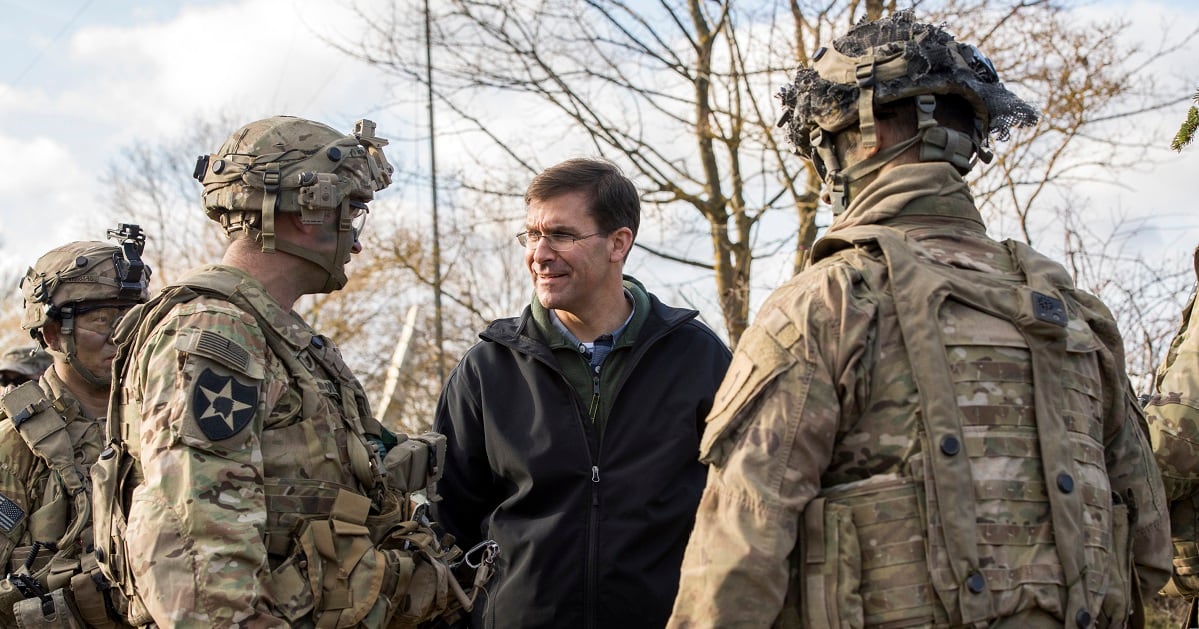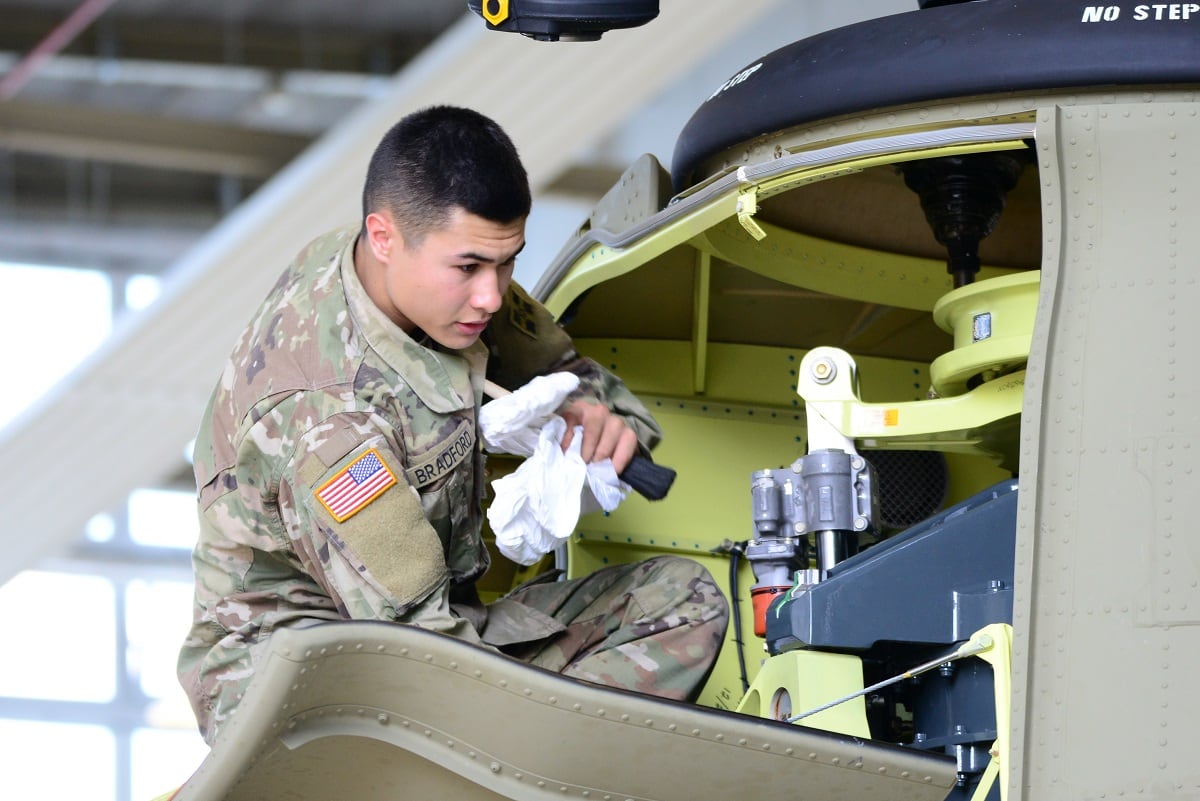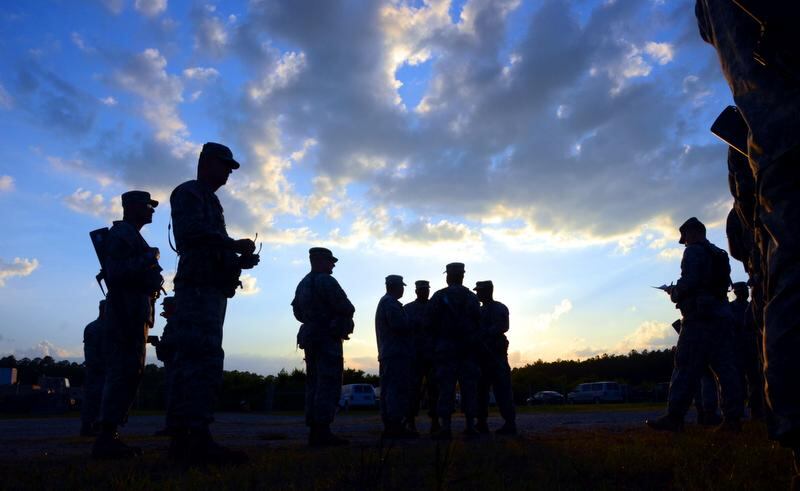Senior leaders have been saying in recent years that the Army is at an inflection point, poised for a transition that will take it out of a 20th century organizational structure and post-9/11 warfare.
The service is going through a top-to-bottom overhaul, from a new physical fitness test to officer personnel reform, a new four-star command devoted solely to modernization and a review examining every program, every bit of training and every administrative requirement to decide whether they contribute to maximum readiness.
“And my message will be to the field, is you all have to do your fair share, too,” Army Secretary Mark Esper told Army Times in a Sept. 19 interview. “If you see something that doesn’t make sense, ask, change it, think about dollars, think about your soldiers’ time, think about efficiency. Does it make sense? Does it help make us more ready and more lethal?”
Esper sat down with Army Times ahead of the Association of the United States Army annual meeting, the service’s largest professional conference, to talk about what he’s gotten done and what’s next.
Going to this AUSA, what do you want soldiers to know about where things are heading?
I believe we are at a transition point in history. So, I mean, organizations get to them in multiple ways. I think we are undergoing what I like to call a renaissance ―right? ― a renewal, if you will.
And it is a renewal of most things we do. So, readiness remains our top priority, and the themes remain the same. So, we talked about it in training. We’ve extended [one-station unit training]. We’re reducing the requirements on soldiers out in the field. We’re doing another memo right now.
For more coverage from the AUSA annual meeting, click here.
Munitions, another component of training ― we are putting a lot of investment in munitions. Maintenance is getting a lot better, in terms of the maintenance front. And personnel. So, in personnel we’ll be coming out soon with our non-deployable policy. We made other policy adjustments as well. I mean, I raised the standards on recruiting. And with the new Army Combat Fitness Test, we’re already seeing non-deployables has come down from 15 percent a couple of years ago, three years ago, to now we’re like eight-point something. And we want to keep driving that down.
So, we’re moving out on those fronts. I’ve talked several times about major lines of effort. Modernization being one, doctrine being a second, and talent management. With talent management, I start pivoting my own time to focus more on that.

What’s coming next on talent management?
I think we need to ... exercise, as much as possible, the authorities that we currently have and the additional authorities given to us by Congress. And the hard part is getting that into the system, into the DNA of [Human Resources Command] and then leveraging it. So, if somebody calls up and says, “Look, I’m not ready for the promotion board. I’d like to kind of skip a year,” we say, “Okay, sure.”
You know, it’s not — it doesn’t become a hassle, if you will.
And we give people that flexibility. But we’ve got to build it into our DNA, and that’s the hard part ― how do you culturally change the Army?
RELATED

We have a one-star in charge of it now, of this task force. He’s a very capable officer, and he brings a lot of energy and fresh ideas. And I’m getting on a pace right now to start meeting with him more frequently so we can lay out not just the individual pieces or the specific changes, but, really, what is the end state we’re shooting for? That’s where we need to begin. And those things can be hard to define.
The easy piece is talking about [the Integrated Personnel and Pay System-Army]. We know what that is. That’s the tool, the engine. But it’s all the other stuff we have to build around it. You know, how long should a command tour be? How often should you PCS? How do we define success? There are a lot of personal opinions on each of those, and we need to kind of tell folks what those look like and what they can expect from their career. And then we optimize the talent toward it.
What other reviews are you doing of the Army as a whole?
On the reform front, we’ve talked about some of the things we did already with regard to ACFT, and things like that. But, you know, the chief and I went through 40 to 50 hours of what’s being called “night court,” with regard to looking at all the programs.
Now we’re doing that with the training peg and the manning peg, and we’re going to just ― wherever we can find time, money, and manpower, we’re going to scoop it up to reform.
The easiest one to understand, of course, is the equipping. ... And it really wasn’t anything more elaborate than saying, “You know, here are the 20-some programs in the [cross-functional teams] that we want to put as priority, and fill those buckets first.”
I mean, I looked at each of the CFT leads over a period of time and said, “Do you have everything you need in this [Future Years Defense Plan]?” And they gave me this, or they made adjustments, and they gave me this and said, “Okay, now what’s left over?” And we went through and started asking ourselves “What do we need for the future fight?” as we went through each one.
"Do we need it? If we need it, do we need this many? And if we need this many, do we need this many over this amount of time?” So, are there things you can eliminate? Are there things you can reduce the buyout? Can you consolidate or can you either stretch out or shorten?
And that allows you to free up money. And by the time you get down to [program] number 515, there may be no money left in the big bucket. And that’s the tough part because they are all good people working on good programs. The question is, how do they stack up?
Meghann Myers is the Pentagon bureau chief at Military Times. She covers operations, policy, personnel, leadership and other issues affecting service members.





